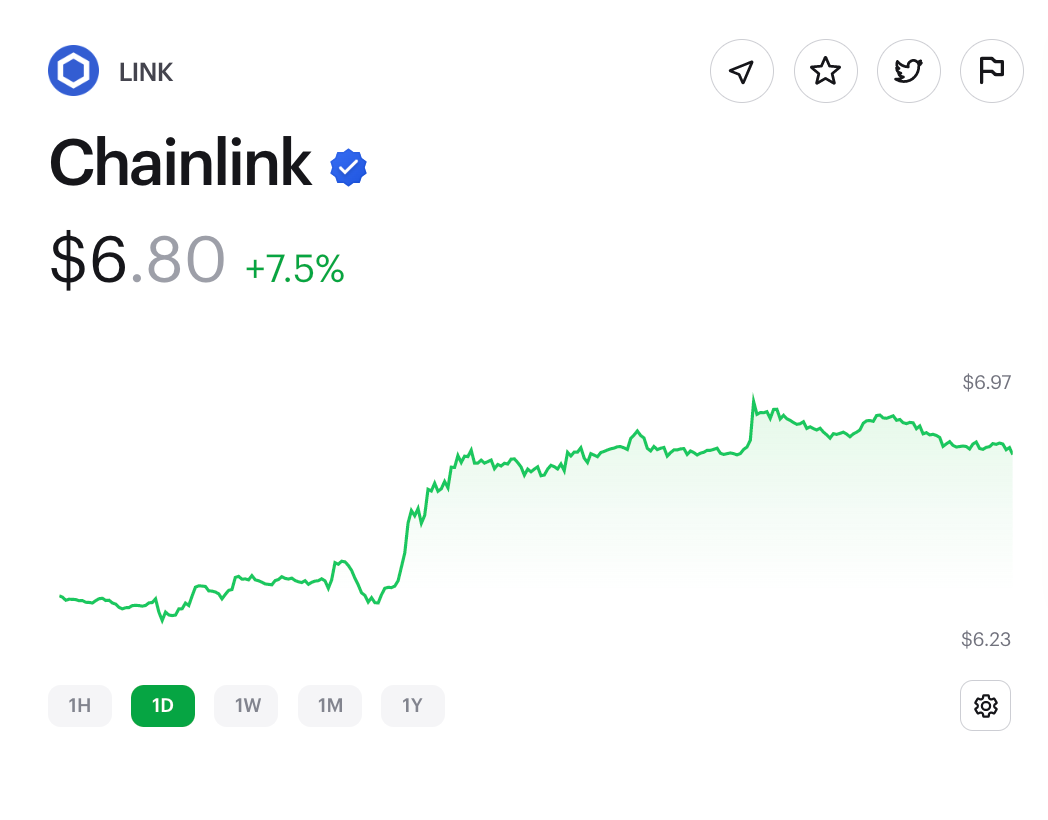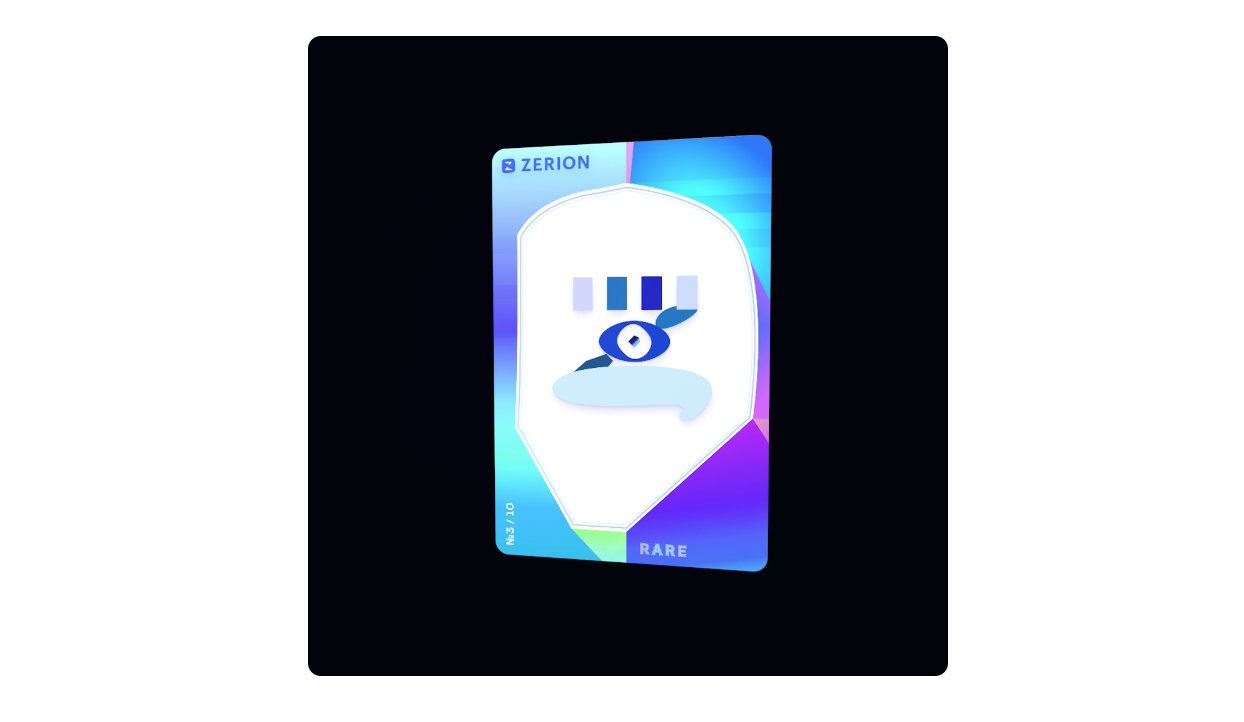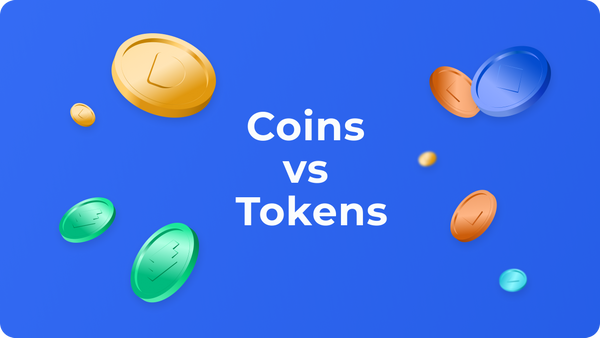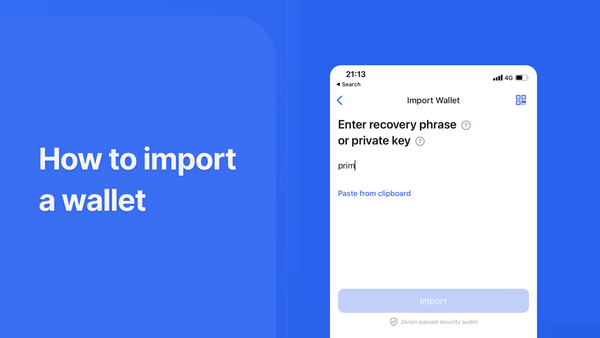The terms “coins” and “tokens” are often used interchangeably in the crypto space, but in fact they refer to different concepts. It is easy to confuse them because both fall under the cryptocurrency umbrella term. Basically, cryptocurrency is a digital asset based on blockchain technology, and both tokens and coins fit this definition.
While coins and crypto tokens are largely the same from a common user’s standpoint, there are technical differences in how they are built. Knowing this difference may help crypto users to make better informed decisions.
This article will explain what unique characteristics set coins and tokens apart from each other.
Key takeaways
- Coins operate on their own independent blockchain
- Tokens do not have their own blockchain
- Coins can function as money
- Tokens typically offer much more functionality than coins
- Tokens are easier to create than coins
What is a coin?
A coin is a cryptocurrency that is native to the blockchain it runs on.
Many blockchains are created from scratch as alternative or improved versions of Bitcoin and other existing public ledgers. Creating a blockchain is also possible with a pre-built open-source blockchain, but it still requires time and a certain level of expertise. Because you can not create a coin without building a blockchain, that means it is not easy to launch a coin.
A prime example of a coin is Bitcoin, or BTC. It is powered by its own blockchain with the same name and is used to pay transaction fees on the network. As BTC was the first established cryptocurrency, coins which appeared afterwards are called altcoins — alternative coins. All altcoins have their own standalone, independent networks as well.
Here is the list of the top 10 cryptocurrencies (according to Coingecko.com) which qualify as coins:
- Bitcoin
- Ethereum
- BNB
- Cardano
- XRP
- Solana
- Polkadot
- Dogecoin
- TRON
- Avalanche
All coins share several common features:
Operate on their own blockchain
All crypto coins without exceptions run on their own blockchains.
Native cryptocurrencies running on original chains and on their forks (new chains created as a result of some changes in the protocol) are considered coins. For example, after Bitcoin forked into two blockchains, Bitcoin and Bitcoin Cash, BTC remained as the native coin of the original chain, while a completely separate new coin appeared for the forked chain — BCH.
An independent blockchain allows for creating new functions and offers unique technical solutions. The efficiency and security of the underlying blockchain technology are among the factors that determine the coin’s intrinsic value.
Act as money
Coins can function as digital money as they have the attributes of traditional currencies: security, scarcity, durability, portability, and a store of value. Some crypto coins have already been accepted as a medium of exchange by certain companies, such as Microsoft, PayPal, Starbucks, Virgin Airlines, etc.
Can be mined
In most blockchains, new coins are issued by a process called mining.
The network participants who validate transactions are rewarded with freshly minted coins. At the same time, each time users make transactions on the network, they pay a network fee, which is spent on rewards.
There are many different mechanisms for verifying transactions, but the most common are proof of work (PoW) and proof of stake (PoS). The validators of PoW networks use enormous amounts of computing power to verify transactions. The PoS mechanism requires staking coin holdings to verify transactions.
What is a crypto token?
A token is a digital unit of value that represents an asset or utility.
Unlike coins, tokens do not have their own blockchain and are issued on top of existing networks. Unlike coins, tokens are not mined in the process of transaction validation. Instead, they are minted. The total number of tokens minted depends on different conditions set by the issuing project.
Tokens can fulfill different purposes. They can be used to raise funds or to give access to particular services. Some tokens can even represent coins on a different network. Such tokens are called “wrapped tokens” and follow the price of the underlying asset. Another very popular type of token is a stablecoin, for example, a token that follows the price of the U.S. dollar.
Here are the top tokens (according to Coingecko) you can find on the crypto market:
- Tether
- USD Coin
- Binance USD
- Dai
- Wrapped Bitcoin
- LEO Token
- Shiba Inu
- Lido Staked Ether
- FTX Token
- Chainlink
How tokens are created
Tokens are always created on existing blockchains.
The easiest route is to use special ready-made solutions for token generation. Using such platforms does not require you to have any coding skills. It could be as simple as creating your own website with a website builder.
However, building a token with advanced features will require more technical skills. First, you will need to deploy a smart contract. To put it simply, smart contracts are self-executed digital contracts with terms and conditions written into code on a blockchain. In the case of some networks, you can copy the code of a smart contract from a software development platform’s depository (e.g. Github).
The purpose of tokens
Tokens are often used by crypto startups to raise capital.
This is usually done through an initial coin offering (ICO) where coins are sold to the investors. After the launch of the project, tokens serve as their currency and provide customers with access to various features.
Tokens’ key benefits
The main benefit of a token is that it does not require creating a brand-new blockchain. The startup can focus on developing its platform instead of the technical aspect of a public ledger. And users don't have to use new non-custodial wallets or learn new bevaiours.
Another advantage tokens bring to the crypto world is asset tokenization. They can represent any coins or assets across blockchains, creating a more frictionless market.
How tokens work
Tokens can enable users' interaction with the project’s platform and services. The exact set of token features is defined by the project itself.
For example, the Basic Attention Token (BAT) provides access to different marketing services on the Brave web browser. Users can pay for ads with BAT tokens. The tokens are then distributed among publishers, advertisers, and ad consumers. This way, publishers and advertisers make their earnings without intermediates, while users are compensated for the “attention” they give to the ads displayed online.
Some crypto tokens also embody tradable goods.
They can represent coins, certificates, in-game items, etc. Metaverses built on blockchain typically require using digital items in the form of non-fungible tokens (NFTs). These tokens represent different types of objects in the game: lands, avatars, tools, armor, etc. Often, all these digital objects are purchased with the native metaverse token. For example, for playing blockchain-based metaverse game Alien Worlds, users will need the game’s token, TLM.
Token types
Tokens can be classified into three types: security tokens, equity tokens, and utility tokens. All of them can be issued to fund the project’s development. Let’s see what characteristics and use cases each token type has.
Security Tokens
A security token is a digital tokenized form of a traditional security.
Security token holders do not have any ownership rights to the entity which issued the tokens. Instead, they might have some other rights attached to it. The tokens are sold through a public offering called a security token offering (STO). Just like traditional securities, security tokens are regulated by bodies such as the U.S. Securities and Exchange Commission (SEC).
According to the SEC, to determine if a token falls under the security token category, one can perform the “Howey Test,” which consists of a series of questions:
- Did you invest money?
- Do you expect profit?
- Did you invest in a common enterprise?
- Are profits dependent on a third party’s effort?
If you answer “yes” to all of these questions, that means you’re dealing with a security token.
Equity Tokens
Equity tokens are a subset of security tokens.
They function like traditional stock assets and provide ownership to the token holders. Holders are also entitled to a share of the company’s profits and a right to vote on its major decisions. Equity tokens are issued through an equity token offering (ETO) process.
Utility Token
Utility tokens provide their holders access to an application or specific services of a blockchain-based project.
Some utility tokens also offer discounts, rewards, or additional benefits to token holders. A genuine utility token usually has no expectation of profit. If that is not the case, it represents a hybrid of a security and utility token. Utility tokens are commonly issued through an initial coin offering (ICO).
Payment Tokens
The sole purpose of payment tokens is to provide a means of payment. These tokens do not interact with blockchain-based applications in any unique way, unlike utility tokens.
Token standards
A token standard is a framework for creating tokens.
A standard defines the smart contract and the features of the token. Different blockchains have their own token standards. Here we will take a look at the common standards for Ethereum-based tokens, as Ethereum is the most commonly used blockchain for launching tokens. Ethereum standards are introduced as Ethereum Requests for Comments (ERC).
ERC-20
ERC-20 is a standard for fungible tokens. Fungible means that all tokens are exactly the same in type and value, and therefore are interchangeable. This standard is usually used for issuing tokens used for voting, payments, staking, etc.

For instance, Chainlink (LINK) is an ERC-20 token built on the Ethereum network. It serves as a currency to pay for Chainlink network operations. Each LINK token is always equal to any other issued LINK token.
ERC-721
ERC-721 is a standard for non-fungible tokens (NFT). These types of tokens are unique and cannot be exchanged for other tokens of the same type. Non-fungible tokens are perfect for creating collectibles, digital art, access keys, or in-game items. Their unique properties allow an NFT to be linked to an image stored on an external server, which makes it possible for a token to have a visual representation.

One example of NFT use case are Zerion Genesis NFTs. A wallet that holds these NFTs does not have to pay fees when using Zerion's trading aggregation.
ERC-1155
The ERC-1155 token standard allows for creating multiple token types: fungible, non-fungible, semi-fungible tokens, or other configurations. Let’s say the goal is to create a game where there will be two types of tokens: one for in-game payments (a fungible token), and another for in-game items (an NFT). With ERC-1155, one smart contract can be created for both tokens, which is more efficient than creating two separate contracts with ERC-20 and ERC-721 standards.
Conclusion
Understanding the difference between a coin vs a token is important for any cryptocurrency enthusiasts planning to dive deep into the crypto world. The in-depth description of coins and tokens in this article should help you to avoid confusion with crypto terms.
To sum it up, the way to tell if you’re dealing with a crypto coin or token is to find out whether the cryptocurrency has a blockchain or not. If it has its own blockchain, then it’s a coin, and if it operates on an existing blockchain, then it’s a token.
Coins primarily serve as a payment cryptocurrency, while tokens, on the other hand, can have a variety of use cases. They can represent an asset, give access to unique services, or even represent a piece of digital art.
If you want to trade tokens, you need a smart wallet like Zerion.
Try Zerion Wallet
And mint a free Zerion DNA NFT!
FAQ
Is Bitcoin a token or a coin?
Bitcoin is a coin as it has its own blockchain. Transaction fees on the network are paid in bitcoins, which are used to incentivize the validators of the network.
What's Wrapped Bitcoin?
Wrapped Bitcoin, or WBTC, is a token representation of Bitcoin existing on other blockchains (e.g., Ethereum). It mimics the price of Bitcoin. Wrapped bitcoins are backed 1:1 by Bitcoin itself. Whenever you decide to return to your BTC, you can exchange WBTC back to BTC.
Are there any other tokens I should know about?
Because tokens have numerous use cases, there may be different types of them. For example, there are governance tokens that have only one purpose — to give their holders voting weight.
There are also synthetic tokens that mimic the price of other assets, such as cryptocurrencies, stocks, and other financial instruments. Unlike wrapped tokens, synthetic tokens representing coins can not be changed into the original coin.




